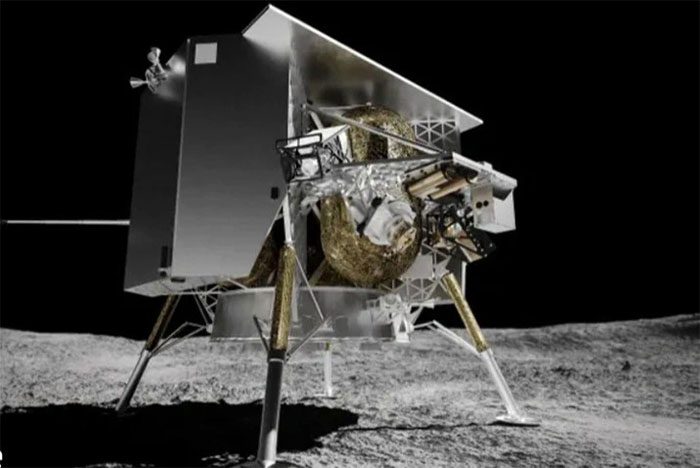Astronomers have expressed concerns that launching dozens of lunar probes could jeopardize research activities and precious resources such as ice in permanently shadowed craters.
Companies are planning to launch numerous probes to survey the lunar landscape in the coming years. Leading the charge is Astrobotic, which is set to launch the Peregrine lander, a box-shaped four-legged spacecraft, from Cape Canaveral, Florida, on January 8.

Peregrine lander, set to be launched from Cape Canaveral, Florida. (Photo: GUARDIAN).
According to the Guardian, this “army” racing to the Moon is largely funded by NASA’s $2.6 billion initiative, Commercial Lunar Payload Services (CLPS). The aim of this initiative is to survey the Moon for the extraction of minerals, water, and other resources to establish long-term, habitable bases there.
However, astronomers warn that rushing to exploit the Moon without restrictions could cause irreparable damage to these valuable scientific sites.
Moreover, such a race could endanger gravitational wave studies, black hole observations, extraterrestrial life research, and other significant scientific investigations.
“The issue has become urgent,” stated Martin Elvis from the Harvard-Smithsonian Center for Astrophysics in an interview with Observer.
“We need to act now, as the decisions made today will determine our behavior on the Moon in the future,” he emphasized.
This viewpoint is echoed by Professor Richard Green, an astronomer at the University of Arizona: “We are not trying to prevent the construction of bases on the Moon. However, there are certain locations that are extremely valuable scientifically. We need to be very careful when establishing our outposts and bases.”
At the end of January 2024, a working group formed by the International Astronomical Union (IAU) will meet with United Nations officials to initiate talks, hoping to lead to strengthened laws to protect interplanetary resources.
According to the International Astronomical Union, several craters on the Moon have been discovered to be shrouded in darkness since the Moon’s formation billions of years ago. Sunlight has never reached these craters, making them incredibly cold. This extreme cold renders them scientifically invaluable.
These sunless polar regions may reveal critical information about the history of water’s existence.


















































